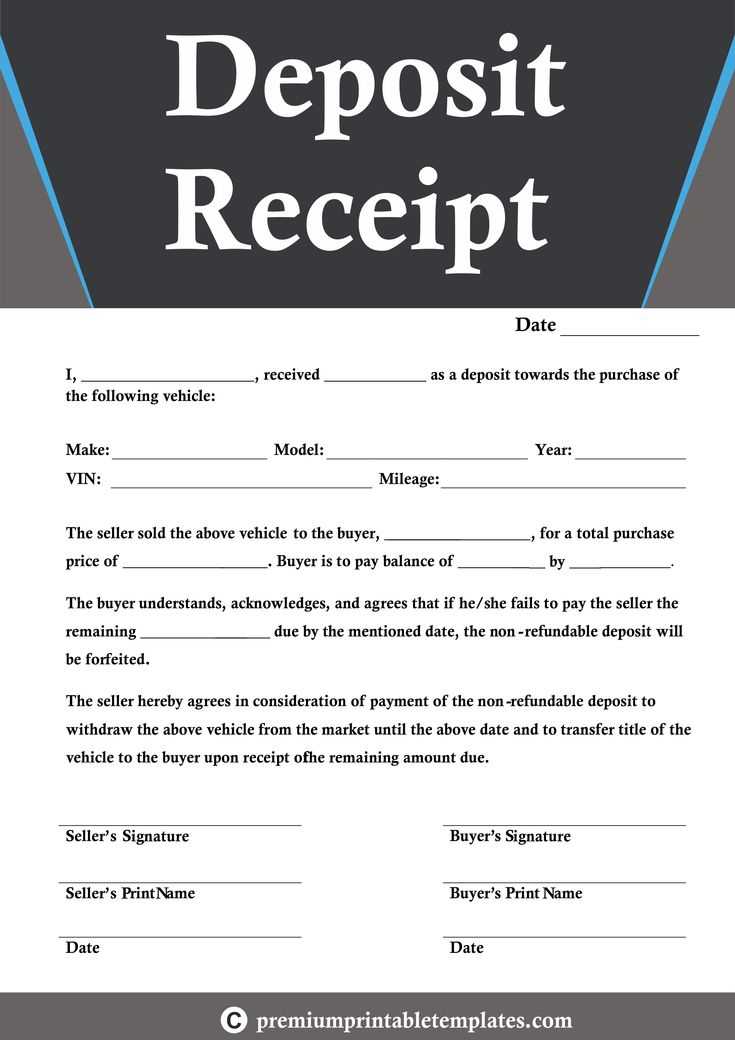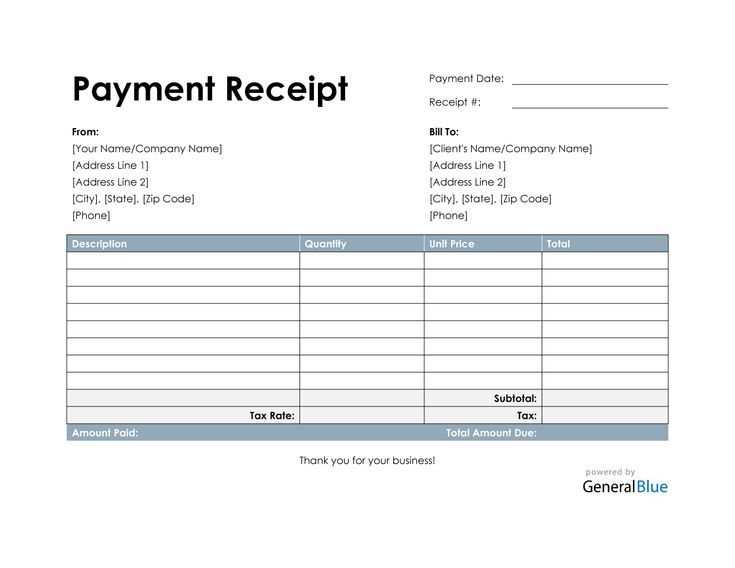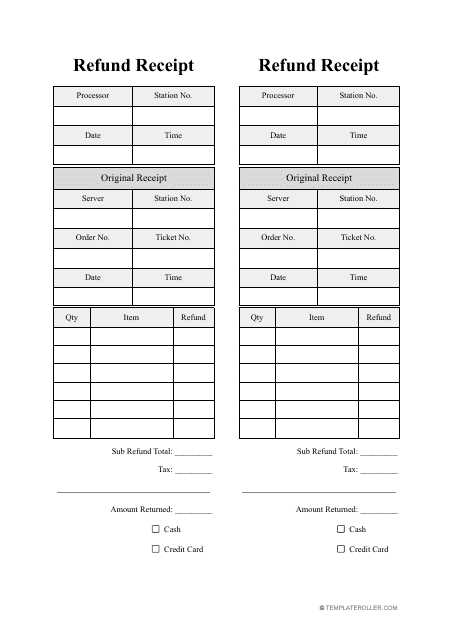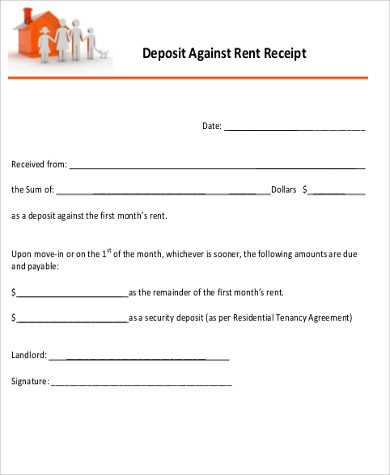
Creating a non-refundable payment receipt template is straightforward once you understand the key elements to include. Begin by clearly labeling the document as a “Non Refundable Payment Receipt.” This immediately informs the recipient about the terms of the payment.
Include basic details such as the payment date, payer’s name, amount paid, and transaction method. Make sure to also mention the service or product provided, linking the payment to the specific goods or services. Adding a unique receipt number will help track the transaction in your records.
In the section that explains the non-refundable nature, be clear about the policy–this part should leave no room for confusion. A brief statement like, “This payment is non-refundable under any circumstances” ensures clarity for both parties. If applicable, include a reference to any terms and conditions where this policy is outlined.
Non Refundable Payment Receipt Template

For creating a non-refundable payment receipt, ensure it includes the following details:
Receipt Header

Clearly state “Non-Refundable Payment Receipt” at the top of the document. Include the date the payment was received, the receipt number for easy reference, and the name or business of the recipient.
Payment Details
Provide a breakdown of the payment, including the amount received, the payment method (e.g., credit card, bank transfer), and a brief description of the product or service paid for. Mention the non-refundable nature of the payment explicitly in this section to avoid any confusion later. A statement such as “This payment is non-refundable under any circumstances” should be prominently displayed.
Ensure all information is clear and unambiguous, and include contact information for the recipient in case there are any follow-up questions regarding the payment.
Creating a Clear Template for Non-Refundable Payments
To create a clear non-refundable payment receipt template, focus on transparency and simplicity. Start with a title like “Non-Refundable Payment Receipt” at the top. This immediately informs the customer about the nature of the transaction.
Key Elements to Include
Ensure the following details are present:
- Payment Date: Clearly state the date when the payment was made.
- Customer Information: Include the customer’s name, contact details, and address.
- Transaction Amount: Specify the exact amount paid and the currency used.
- Non-Refundable Statement: Include a bold statement saying the payment is non-refundable. For clarity, this can be worded as “This payment is non-refundable and will not be returned under any circumstances.”
- Payment Method: Indicate how the payment was made (e.g., credit card, bank transfer, cash).
- Receipt Number: Assign a unique number to each receipt for reference.
- Service or Product Description: Briefly describe what the payment covers (e.g., booking fee, product purchase).
Clarity and Readability
Choose a clear, easy-to-read font and ensure the layout is straightforward. Avoid excessive jargon or complex language that could cause confusion. Present the non-refundable clause prominently, ideally in bold text, to minimize misunderstandings.
Provide enough space between sections to make the information digestible, and include contact information in case the customer has questions.
Legal Considerations in Non-Refundable Receipts

Non-refundable payment receipts must clearly outline the conditions under which the payment is non-refundable. The absence of this clarity can lead to disputes. Specify terms in your receipt, making sure to include the reason for non-refundability, whether it’s due to the nature of the service, event, or product.
Legality of Non-Refundable Policies varies depending on jurisdiction. Some regions may require the possibility of a refund under certain circumstances, such as when services are not rendered as agreed or if the product is defective. Always check local consumer protection laws to ensure compliance.
Transparency plays a key role in preventing legal challenges. Customers should not be left guessing about refund policies. Outline non-refundability in clear terms before the transaction is completed. Disclose this information in contracts, invoices, and even the payment process on your website or at the point of sale.
Consumer Rights laws can differ widely, but many countries protect consumers from unfair practices. While non-refundable policies are generally enforceable, they may not apply in all situations, especially if the customer can prove that the service or product did not meet the agreed standards.
Non-refundable receipts should also include contact information and the procedure for addressing disputes. In some cases, a company may offer credit or alternative solutions instead of direct refunds, which can be a good compromise if refunds are prohibited.
Best Practices for Customizing Non-Refundable Payment Receipts
Ensure the non-refundable payment receipt is clear and precise. The receipt should contain all the necessary details in an organized format, so customers know exactly what they are paying for. Here’s how to make the most of it:
1. Include Clear Payment Terms
- State explicitly that the payment is non-refundable.
- Highlight refund policy exceptions, if any.
- Use simple, direct language to avoid any confusion.
2. Make Important Details Stand Out
- Use bold text or a larger font size for critical information like the payment amount, transaction number, and date of payment.
- Ensure that all relevant details are clearly marked, including the service or product description, and payment method.
3. Provide Contact Information
- Include customer support contact information for queries related to the payment.
- Provide an email address or phone number where customers can reach you if they have questions about the receipt or the policy.
4. Customize the Layout for Branding
- Incorporate your company logo and consistent brand colors.
- Use a layout that aligns with your brand’s overall style and enhances readability.
5. Keep It Professional
- Ensure the tone is polite and professional, especially when communicating policies like non-refundability.
- Avoid overly formal language; maintain clarity without sounding too rigid or impersonal.
By following these steps, your non-refundable payment receipts will be transparent, customer-friendly, and in line with your business practices.


